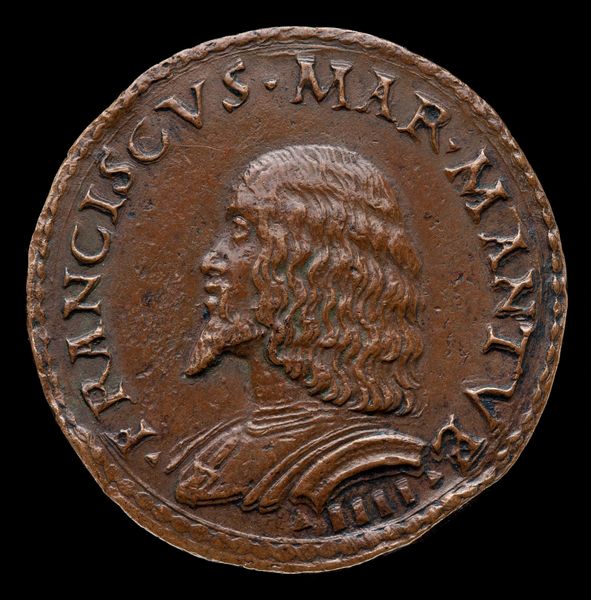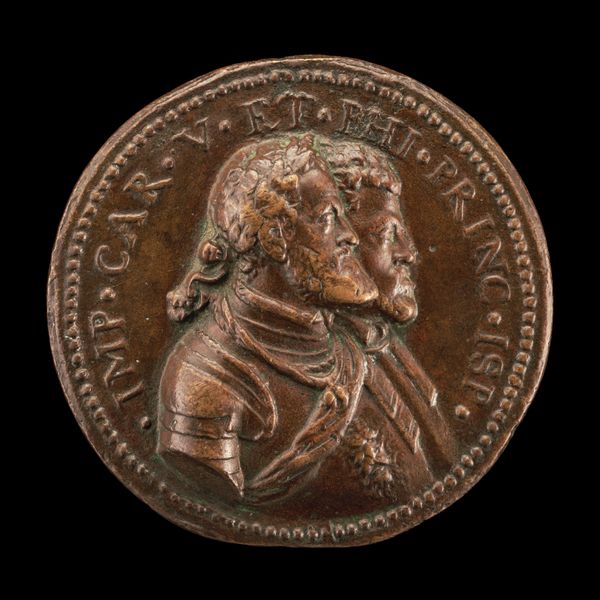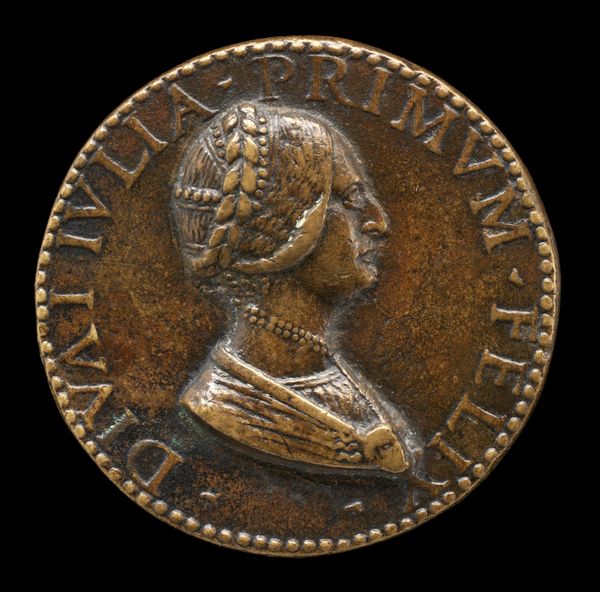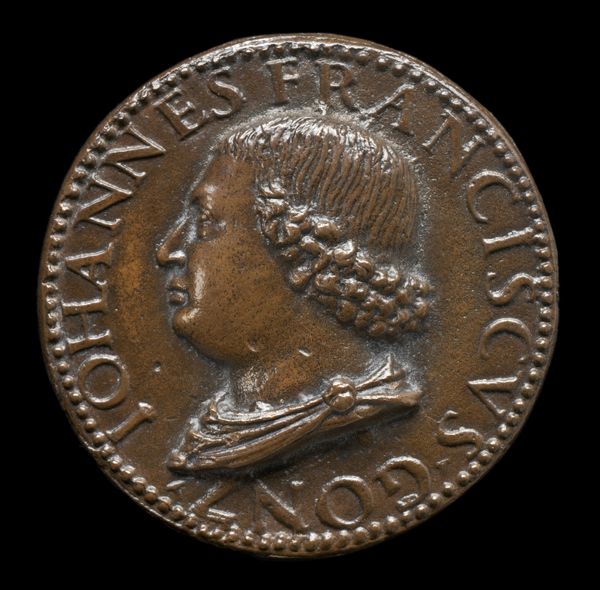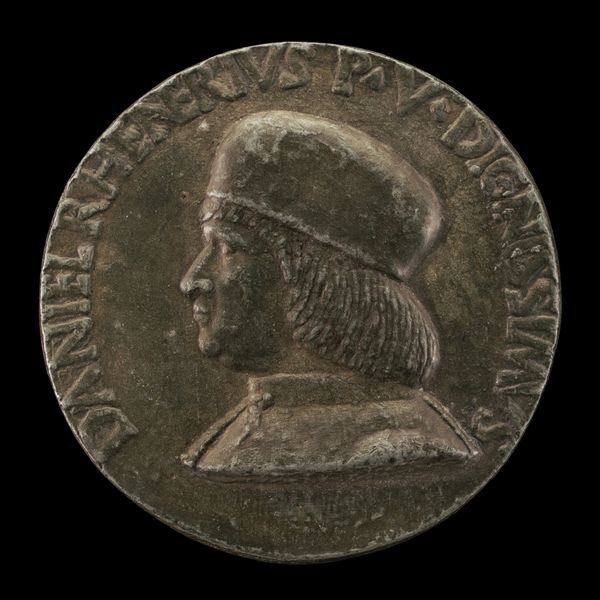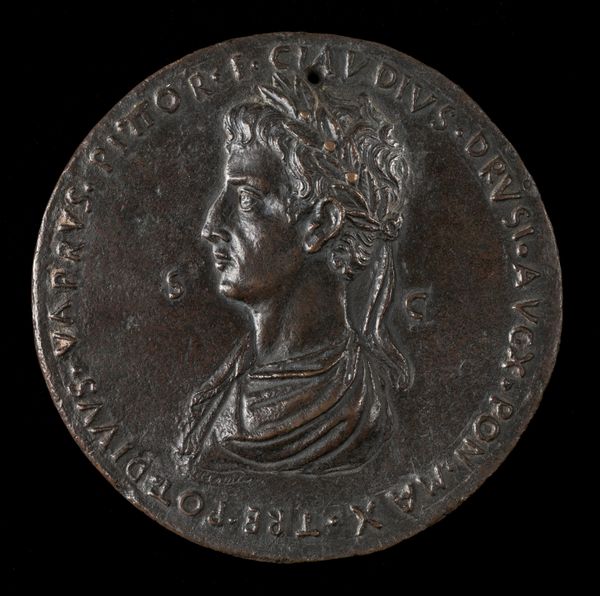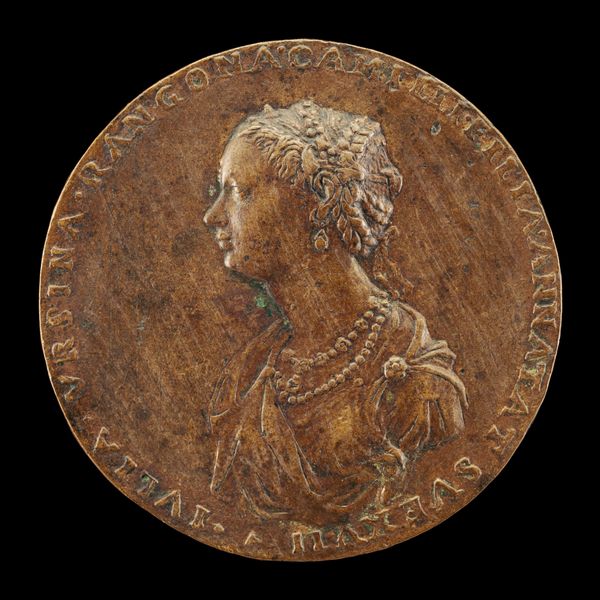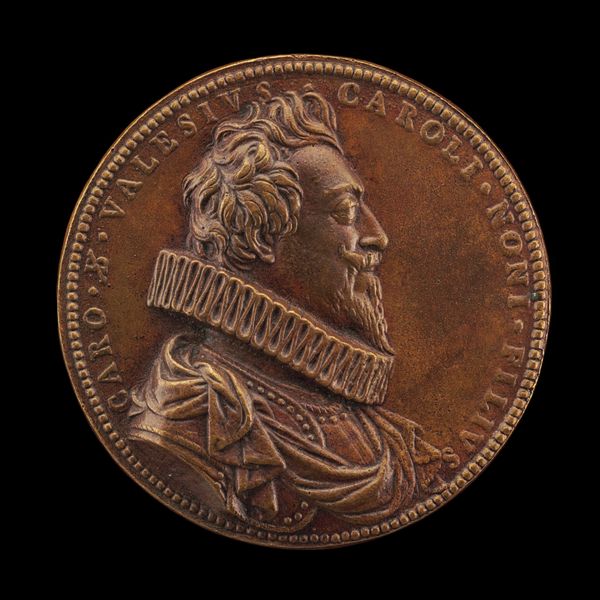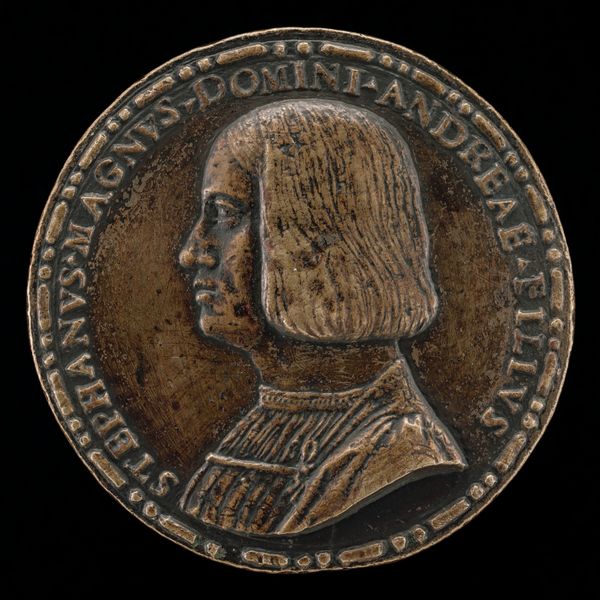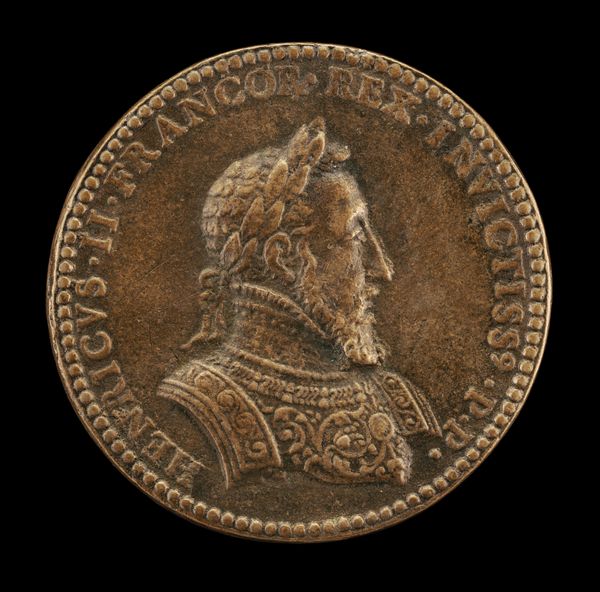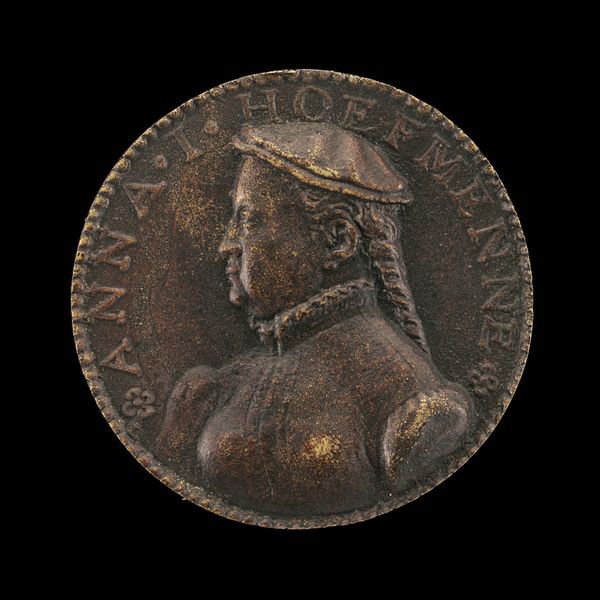![Francesco II Gonzaga, 1466-1519, 4th Marquess of Mantua 1484 [obverse] by Gian Marco Cavalli](/_next/image?url=https%3A%2F%2Fd2w8kbdekdi1gv.cloudfront.net%2FeyJidWNrZXQiOiAiYXJ0ZXJhLWltYWdlcy1idWNrZXQiLCAia2V5IjogImFydHdvcmtzLzI0ZDZiZDQxLWQzM2ItNGJjZi1hY2VmLWVmOWQxMzVlMmZiNy8yNGQ2YmQ0MS1kMzNiLTRiY2YtYWNlZi1lZjlkMTM1ZTJmYjdfZnVsbC5qcGciLCAiZWRpdHMiOiB7InJlc2l6ZSI6IHsid2lkdGgiOiAxOTIwLCAiaGVpZ2h0IjogMTkyMCwgImZpdCI6ICJpbnNpZGUifX19&w=3840&q=75)
Francesco II Gonzaga, 1466-1519, 4th Marquess of Mantua 1484 [obverse] c. 1484 - 1506
0:00
0:00
metal, relief, sculpture
#
medal
#
metal
#
sculpture
#
relief
#
11_renaissance
#
sculpture
#
italian-renaissance
Dimensions: overall (diameter): 3.27 cm (1 5/16 in.) gross weight: 22.27 gr (0.049 lb.) axis: 11:00
Copyright: National Gallery of Art: CC0 1.0
Curator: The striking bronze medal before us features Francesco II Gonzaga, the 4th Marquess of Mantua, rendered by Gian Marco Cavalli sometime between 1484 and 1506. Editor: It's quite striking. I'm immediately drawn to the rather stoic, almost melancholic profile. There's a gravity here, a certain weight carried within the confines of this circular form. Curator: Indeed. The structure is compelling. Note the careful arrangement of text around the periphery, framing the central image with precision. The relief is shallow, yet effective, creating depth within a limited space. Editor: The very use of bronze, I think, speaks volumes. Bronze has, since antiquity, represented durability and authority. Casting Francesco in bronze thus subtly elevates him. I see a symbol of power in the medal itself, a means to circulate his image and assert his legitimacy. Curator: Absolutely. Furthermore, consider the lines. The contour of his jaw, the flow of his hair—the artist uses line to define form and texture, to create a visual rhythm that holds the viewer's eye. Semiotically, the flowing hair contrasts the rigid armor around his neck— Editor: Ah, but notice how his beard is quite carefully sculpted! He has chosen a length that speaks of seriousness, but trimmed with an artist's careful hand that symbolizes wealth and care for image. A man of intellect *and* a man of power. It says so much, subtly, to anyone who sees it even today. Curator: The scale is essential. Its small size invites intimacy, yet it projects an aura of power suitable for wide circulation. The selection of typeface contributes— Editor: Well, now I start thinking: How many people handled this medal? Did soldiers carry it as a protective amulet? Was it given as a gift? Because a portrait on this medium isn’t merely a flat representation; it's imbued with all sorts of associations. Curator: A fruitful interpretation, indeed. The way that Cavalli renders the face shows a subtle attention to realistic proportion... it gives off an important air of "truth", but even *that* choice means something. Editor: Absolutely, it provides a certain access to the subject—we, today, think we get an honest vision into the Marquess because the symbols work! It's carefully crafted, both physically and metaphorically. A lovely piece! Curator: A potent example of Renaissance portraiture rendered through masterful structure and striking form.
Comments
No comments
Be the first to comment and join the conversation on the ultimate creative platform.

